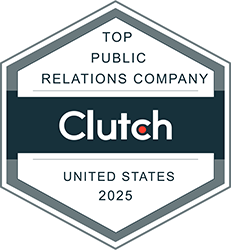Sponsored content seems to be everywhere these days, even though you may not always know it. It can be difficult to recognize, as sponsored content seamlessly blends in with organic content (when done correctly). If you don’t know what sponsored content is, don’t worry – you’re not alone. Although sponsored content has been on the rise in media publications over the past few years, there are still plenty of people who are confused about its purpose and how it differs from advertising. But have no fear; we’re here to answer all your questions and show you the ins and outs of sponsored content.
What is Sponsored Content?

Simply put, sponsored content is paid content by a brand that looks like the other editorial material appearing on a print publication or media website. The intent of a sponsored post is to inform or entertain a publication’s audience while promoting a positive perception of a brand. As mentioned above, if sponsored content is done well, it should read like any other content you might find in that outlet. For this reason, sponsored content has developed a bad reputation with some people who feel as if they’ve been tricked into reading an article that’s been paid for by a brand. However, it’s important to note that sponsored content isn’t a native advertisement. It tells a story on behalf of a brand, instead of directly pushing a product.
How Can You Spot A Sponsored Post?

You’re probably already familiar with sponsored content if you’ve ever read a Buzzfeed “listicle.” Here is an example where Charmin sponsored a post entitled 10 Bathroom Cleaning Tips For People Who Just Can’t. As you can see, the article includes fun gifs, images and text that fits with the voice and manner of Buzzfeed. But at the top, Charmin is noted as a brand publisher and uses the humorous topic of the bathroom to influence the public’s perception of their brand.
Why Do You Need Sponsored Content?

The numbers don’t lie; despite some people’s feelings about sponsored content, it proves to be effective. On average, consumers are spending the same amount of time reading a sponsored post as they are with organic content. Additionally, nearly three-quarters of publishers and media buyers alike are embracing sponsored content, and that number is only expected to grow. Using sponsored content can be a great way for a brand to raise awareness, get on people’s radars and increase traffic.
How Can I Use Sponsored Content?
There are several rules you should abide by when it comes to sponsored content. We’ve thrown together some do’s and don’ts and real examples of sponsored content that worked – or completely failed.
Do Know Your Audience

When you’re writing a sponsored post, you should always keep in mind the audience you want to reach. For every publication or website you choose to write a post for, you should consider who their readers are and how you are going to provide content that is aligned with their interests. In the New York Times, Netflix sponsored this article about women inmates. The article provided a hard look at the American prison system and felt like an article readers would find in the Times, all while naturally fitting the sponsorship by Netflix’s show, Orange is the New Black.
Don’t Be an Ad

Sponsored content has typically failed in the past when it looks and acts too much like an advertisement . An infamous example of this occurred several years ago when The Atlantic ran a sponsored article featuring the successes of the Scientology religion. The post advocated so much for the growth of Scientology that it was met with immediate backlash and ultimately had to be removed from the website. Remember that sponsored content should not be a hard sell.
Do Tell a Story

At the end of the day, sponsored content should benefit both the brand and the publication. Any successful sponsored post will engage audiences by telling a story that people want to hear. Audiences don’t want to read a sales pitch on their daily news outlets, but they do want to read feel-good and interesting stories. This article from Forbes sponsored by Capital One is a great example of a post that encourages audiences to read more stories from Forbes and have a better perception of Capital One.
Now that you’ve passed our crash course on sponsored content, you’re ready to get out there and try it on your own! Are you familiar with sponsored content or have some examples we should know about? Give us a shout out by tweeting us @BIGfishPR!


